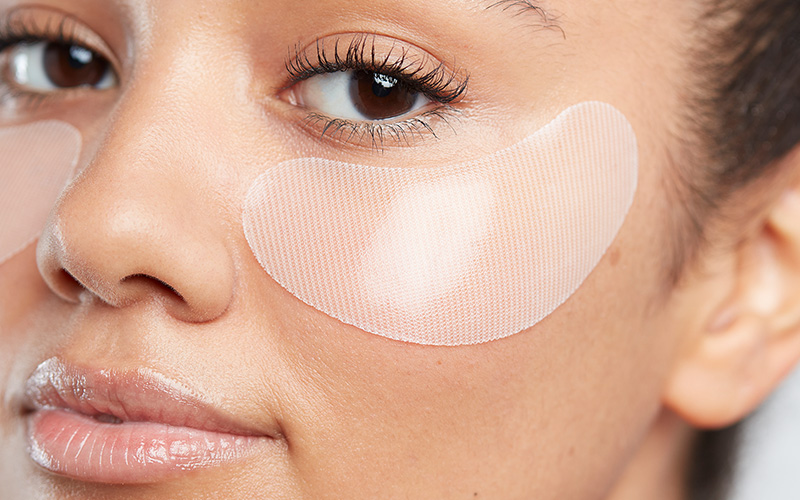What Eye Doctors Say About Treating Dark Circles
- ghulamabbas7474614
- Jul 12
- 4 min read
Tired of people asking if you're getting enough sleep even when you’re well-rested? You’re not alone. Dark circles under the eyes are one of the most common concerns eye doctors and dermatologists address daily. While often brushed off as a cosmetic issue, dark circles can point to underlying lifestyle, genetic, or health-related factors.
So, how to get rid of dark circles? That’s the question many patients ask. The good news is—eye doctors have answers backed by science, clinical experience, and real patient outcomes. Let’s explore what experts say about treating those pesky shadows and restoring a brighter, healthier look.

Understanding the Causes of Dark Circles
Before jumping into treatments, it’s essential to understand what causes dark circles in the first place. According to ophthalmologists and dermatologists, the common causes include:
Thin under-eye skin revealing blood vessels
Hyperpigmentation
Genetics
Aging and volume loss
Allergies and rubbing
Lack of sleep or fatigue
Sun exposure
Each case is unique, and eye doctors emphasize the importance of identifying the root cause before prescribing treatment. Asking how to get rid of dark circles? without understanding the cause may lead to ineffective results.
What Eye Doctors Recommend: Clinical Treatments That Work
1. Topical Eye Creams
Eye creams with active ingredients like vitamin C, retinol, caffeine, and niacinamide are often the first step. These help improve pigmentation, boost collagen, and reduce puffiness.
Pros:
Non-invasive
Suitable for daily use
Ideal for mild cases
Cons:
Results are gradual
Limited effectiveness for severe pigmentation or hollowing
Eye doctors advise choosing medical-grade formulations and using them consistently for at least 8–12 weeks to see improvement.
2. Chemical Peels for the Under-Eye Area
For patients dealing with hyperpigmentation, especially in darker skin tones, light chemical peels (with glycolic acid or lactic acid) can be effective.
Benefits:
Exfoliates pigmented skin
Brightens the under-eye area
However, peels must be administered by trained professionals. Overuse or incorrect application can damage the delicate under-eye skin.
3. Dermal Fillers: Volume Restoration
Hollow tear troughs often cast shadows, making dark circles appear worse. In such cases, hyaluronic acid-based fillers like Restylane or Juvederm are commonly used.
What Eye Doctors Say:
Fillers work best for volume loss—not pigmentation
The results are immediate and last 6–12 months
Must be done by an oculoplastic surgeon or experienced injector
Wondering how to get rid of dark circles? If your dark circles are caused by sunken eyes or aging, fillers might be the fastest route.
4. Laser Treatments
Lasers like fractional CO2 and Q-switched Nd: YAG are used to address pigmentation and stimulate collagen production.
Doctor Insights:
Effective for dark pigmentation and skin tightening
Usually requires 3–5 sessions
Post-treatment redness is normal
Eye doctors warn that not all skin types are ideal for laser, so proper evaluation is critical to avoid side effects like post-inflammatory hyperpigmentation.
Can Lifestyle Changes Help? Doctors Say Yes
While clinical treatments offer dramatic results, lifestyle habits also play a big role in maintaining outcomes. According to doctors, these changes can enhance and prolong results:
Improve sleep hygiene: 7–9 hours per night is key
Stay hydrated: Helps reduce puffiness
Use sunscreen daily: Prevents pigmentation from worsening
Manage allergies: Avoid excessive eye rubbing
Eat antioxidant-rich foods: Boosts skin health from within
If you’re researching how to get rid of dark circles?—don’t underestimate the power of daily habits.
Home Remedies: Are They Worth Trying?
Doctors are often asked about DIY remedies like cold tea bags, cucumber slices, or almond oil. While not harmful, eye specialists caution that these offer limited results compared to professional treatments.
Verdict:
May provide temporary relief for puffiness
Do not address root causes like pigmentation or hollowing
Eye doctors suggest combining gentle home remedies with medical treatments for better outcomes.
Post-Treatment Care: What Eye Doctors Advise
After professional procedures like lasers or fillers, follow-up care is crucial. Doctors recommend:
Avoiding sun exposure for at least a week
Using soothing eye creams with hyaluronic acid
Not rubbing or applying pressure on the treated area
Sleeping on your back to reduce fluid retention
Following your specialist’s instructions ensures faster healing and lasting results.
How to Get Rid of Dark Circles? Customized Plans Matter Most
There is no one-size-fits-all solution. The best approach, according to eye doctors, involves a tailored treatment plan based on your skin type, age, and underlying cause.
A typical plan may include:
A prescription-strength eye cream
A series of under-eye laser sessions
Tear trough filler for structural support
Regular follow-ups to monitor progress
Ask your doctor to evaluate your tear trough depth, pigmentation level, and skin laxity to craft a comprehensive approach.
Conclusion: Don’t Just Cover Up—Treat Smartly
If you’re tired of concealers and filters, it’s time to explore what real experts say. So how to get rid of dark circles? The answer lies in combining science-backed treatments, lifestyle corrections, and personalized medical care.
Eye doctors emphasize that treating dark circles isn’t just about appearance—it’s about restoring confidence and wellness. With the right strategy, you can brighten your look and lighten your concerns.



Comments